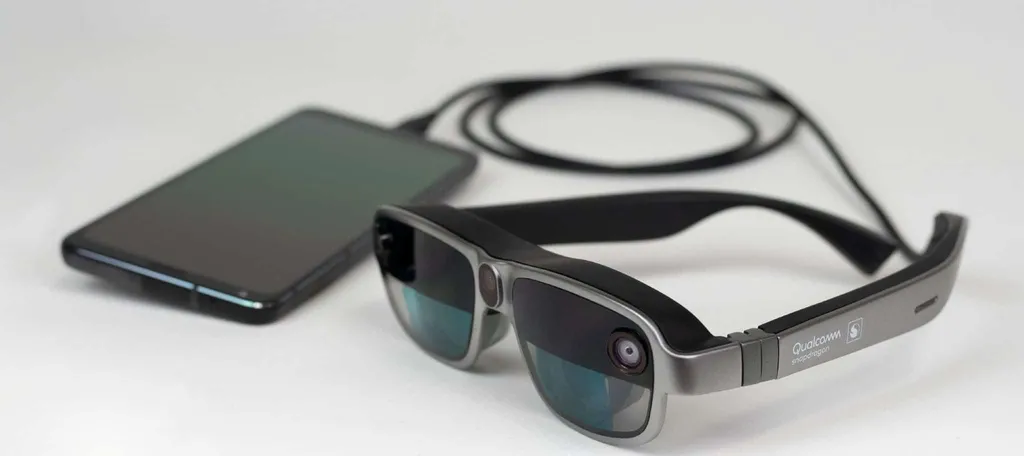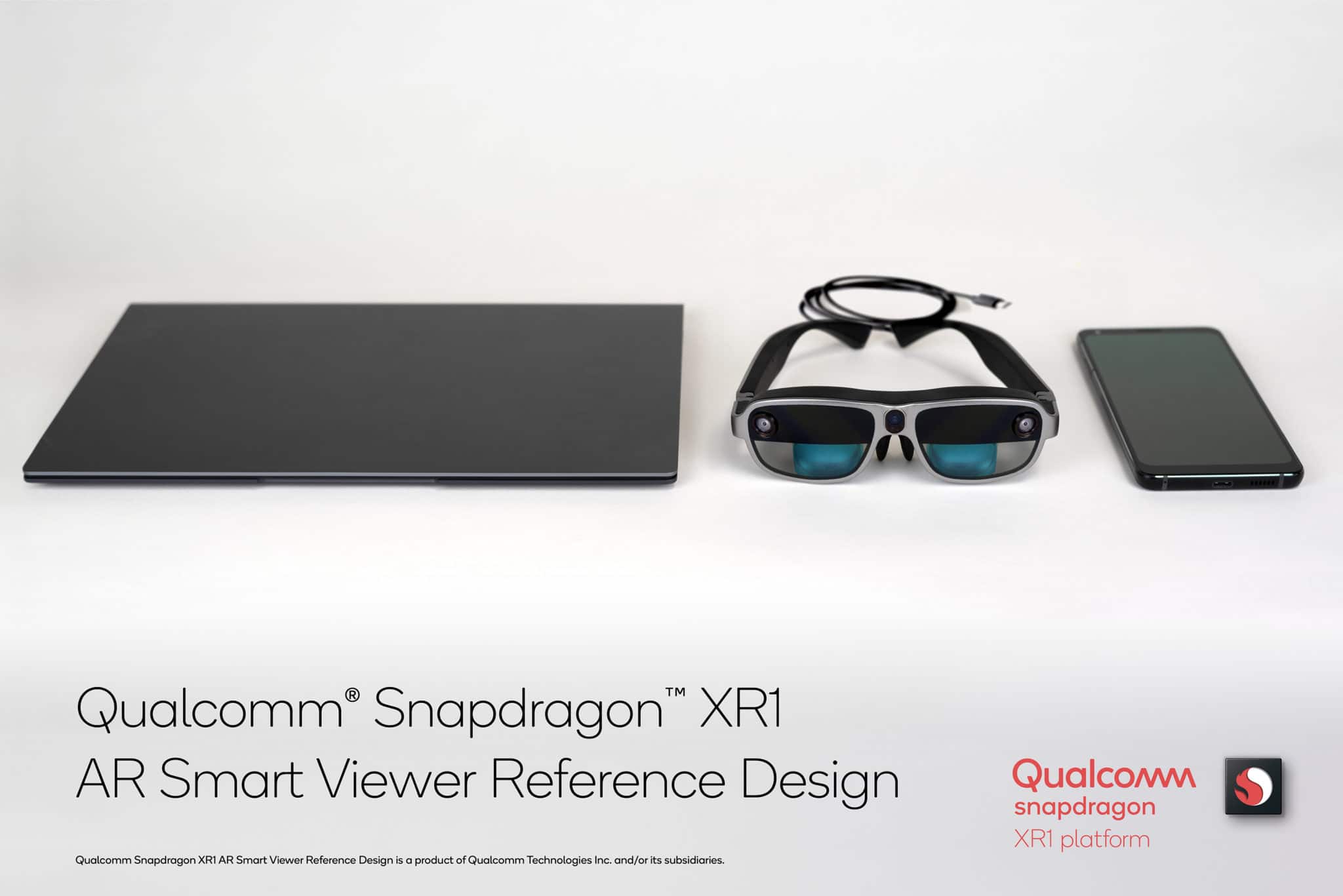Qualcomm announced a reference design for what it calls an “AR Smart Viewer” meant to enable manufacturers to build on the idea more quickly.
Qualcomm developers a number of reference designs that showcase some of the potential of devices built around its chips. The latest design is based on the XR1 platform and meant to connect over a wire to a compatible smartphone, Windows PC, or dedicated processing puck. The glasses have processing inside of them, distributing tasks between the viewer themselves and the device to which it connects. Qualcomm says the architecture can reduce overall power consumption by 30 percent compared to glasses which leave all the processing outside the headset. The company also announced an app framework designed to make it easier for manufacturers to launch smartphone apps as windows that can be anchored to locations in the physical world.
There’s support for a camera with image stabilization — meant for certain use cases like a remote assistant — as well dual monochrome cameras for 6DoF head tracking as well as hand tracking. The reference design made by Goertek includes a micro-OLED binocular display from BOE with frame rates up to 90Hz.
The design looks similar in overall concept to the glasses from companies like Nreal and Lenovo, but Qualcomm’s reference designs are typically proof-of-concept devices that pack in a lot of features which are sometimes left out of consumer devices for various reasons, like cost or power consumption. Manufacturers hope to eventually pack all of the processing needed for AR glasses into a single head-worn device that’s so slim people think it is comfortable and stylish enough to wear out of the house all day, but that goal is still a long ways a way from realization.




























